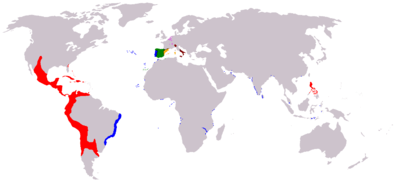Council of Italy

The Council of Italy, officially, the Royal and Supreme Council of Italy (Spanish: Real y Supremo Consejo de Italia) was a ruling body and key part of the government of the Spanish Empire in Europe, second only to the monarch himself. It administered the Habsburg territories in Italy: the Kingdom of Naples, the Kingdom of Sicily, and the Duchy of Milan. Before the 1558 creation of the Council, Spanish possessions in Italy were administered by the Council of Aragon.
History
By the year 1559, Spain had complete dominance over all Italian states with the exception of the Venetian Republic. All other Italian states were either ruled directly by Spain or were Spanish dependents. Naples, Sicily, and Sardinia (which had been Aragonese), as well as Milan were those lands which came under direct Spanish rule. Local councils and viceroys (in Naples, Palermo, and Cagliari) or governors (in Milan) controlled the internal affairs of these lands. In an effort to better coordinate Spanish rule in Italy, Philip II created the Council of Italy in Madrid in 1558. Naples, Sicily, and Milan were represented at the Council by two regents each (one Castilian, one native-born). Sardinia remained under the jurisdiction of Council of Aragon. Most of the Spanish viceroys and governors in Italy were Castilian rather than Italian, reflecting the Crown's desire to transform the Empire into a predominately Castilian one.[1][2]
See also
References
- ↑ Marino, John A. "Italy history - geography :: Spanish victory in Italy". Encyclopedia Britannica. Encyclopædia Britannica, Inc. Retrieved 25 January 2015.
- ↑ Koenigsberger, Helmut Georg. "Spain history - geography :: Philip II". Encyclopedia Britannica. Encyclopædia Britannica, Inc. Retrieved 25 January 2015.